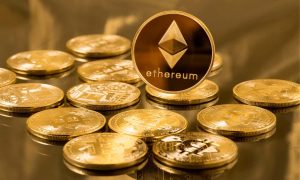Today, the Dencun update of Ethereum has been tested on the Goerli testnet.
The outcome was negative.
And it seems like we have a chain split! Client teams are looking into it, but it’s likely to a while to pin down + fix the issues. Keep an eye out for updates!
— timbeiko.eth
(@TimBeiko) January 17, 2024
The negative outcome of the Dencun update on the Goerli testnet of Ethereum
The problem encountered with this test was a chain split.
According to what has been stated by some Ethereum developers, it will take some time to identify and resolve the issues that caused the split.
When a decentralized protocol is updated, there is a risk that not all nodes correctly receive the update. In these cases, there is a risk of generating two chains, one updated and one not.
In the specific case of last night’s Dencun test, participation on Goerli was low, and the chain did not finalize.
As expected, Goerli participation is low and the chain isn’t finalizing. This could be a combination of client issues and of validators not updating / not running. Expect hours / days of non-finality.
It’s not particularly concerning and devs will spend the next few days making… https://t.co/vTjtGUTBgs
— EthStaker
(@ethStaker) January 17, 2024
However, since it was only a test, its failure is not particularly worrying, and the only consequence it will have is that developers will have to spend the next few days ensuring that enough Goerli validators update to reach the goal.
However, it should be noted that the Goerli testnet is intended to be deprecated, so the next test conducted on the new Sepolia testnet will be more important.
The Goerli testnet
Goerli is one of the historical testnets of Ethereum. It was launched in 2018, when the Ethereum network was still based on Proof-of-Work, and now it has become obsolete with the transition to Proof-of-Stake.
However, being the main historical testnet, it is still in use, although over time it will be deprecated and abandoned.
A testnet is a separate testing network, completely separate from the main network, on which you can perform all the tests you want without any consequences for the main network.
They are used precisely to search for any problems before launching updates on the main network.
Even with the transition to Proof-of-Stake, there were initially problems with testing on the testnets, and it was thanks to those tests that all the issues were identified and resolved, so that the final launch on the Ethereum mainnet went smoothly.
The main Ethereum testnet has now become Sepolia, created in 2021 and fully integrated with Proof-of-Stake.
So now developers will have to analyze what problems caused the chain split on Goerli after the Dencun update test, and then perform a new test on Sepolia.
The Dencun update on Ethereum: from the Goerli testnet to the next goals
The Dencun update is the next important update of the Ethereum network.
Dencun is actually a double update, as it consists of both the Deneb update and the Cancun update.
Deneb is an update of the consensus level, responsible for block validation, while Cancun is an update of the execution level with the protocol rules.
The Ethereum network is now composed of two layers, a consensus layer and an execution layer. The consensus layer is the one that, thanks to Proof-of-Stake (PoS), validates the new blocks that are added to the Ethereum blockchain. It is also called Ethereum 2.0 and is based on the Beacon Chain, which is the new Ethereum blockchain based on PoS that allows staking.
Instead, the execution level, or networking layer, is the one that allows nodes to communicate with each other and contains the rules of the Ethereum protocol.
The Cancun upgrade will improve several aspects of the execution level, while Deneb will complete the upgrade on the consensus level. One of the goals of this upgrade is to increase the speed of transactions on Ethereum.
The improvements
Cancun aims to make Ethereum’s PoS more efficient and robust, while also introducing the implementation of Proto-Danksharding.
It is precisely the Proto-Danksharding that should increase the number of transactions per second that can be handled by the Ethereum network.
This Proto-Danksharding serves as the first step to activate Danksharding on Ethereum, which is a rollup-based solution that effectively compresses transaction data, making it possible to include more transactions in each block.
Other improvements in Cancun will include a reduction in data storage costs, improvements to crosslink bridge infrastructure and staking pool infrastructure, some minor changes to the EVM code to enhance performance, and a security enhancement that removes the SELFDESTRUCT function that could potentially block smart contracts.
The most interesting thing will be the addition of Proto-Danksharding, and therefore the possibility of creating compressed data blobs to include in the blocks.
The risks
However, there is a risk that this update may create problems for some smart contracts, especially older ones.
In fact, the introduction of new changes and features could create compatibility issues with the latter.
In addition, improving data storage requires a migration of the same that may not happen smoothly.
For these reasons, it is extremely important that the tests on the testnet yield positive results.
However, it should not be considered that the failure of the test on Goerli is something serious, because on the contrary it is useful and important that any problems emerge before, during the tests, and not when the update will arrive on the mainnet.























